Mont-Saint-Michel: Architectural Splendor Amidst Tidal Wonders
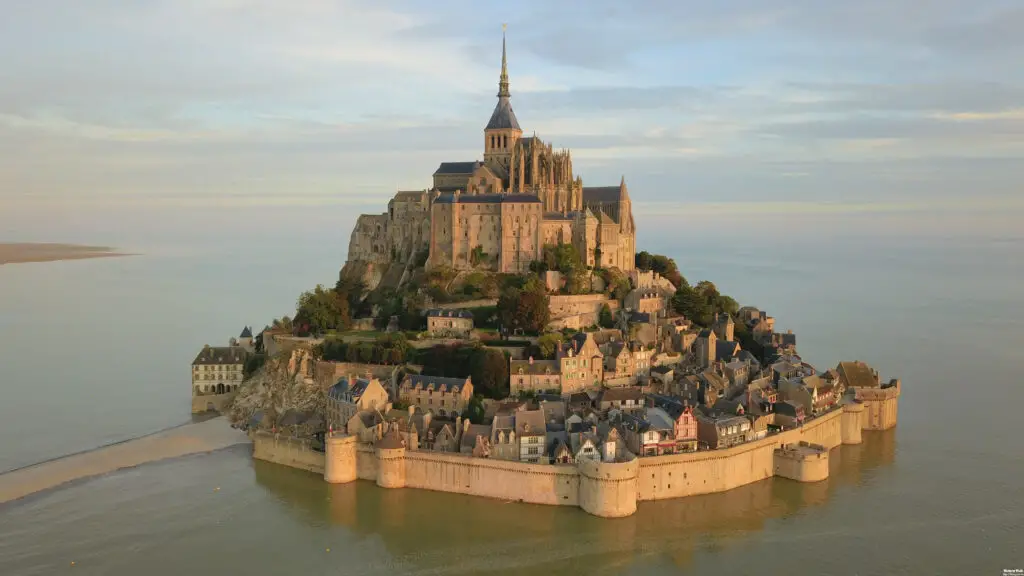
Introduction
Mont-Saint-Michel, an iconic island commune in Normandy, France, stands as one of the most captivating and awe-inspiring sights in the world. Its dramatic setting, rising out of the vast tidal flats of the Bay of Mont-Saint-Michel, combined with its stunning medieval architecture, creates an unforgettable silhouette that attracts millions of visitors each year. The abbey and its surrounding village embody a rich tapestry of history, culture, and natural beauty that continues to enchant all who visit.
The story of Mont-Saint-Michel is one of both spiritual significance and architectural ingenuity. The site has evolved over centuries from a humble sanctuary to a grand abbey, reflecting the artistic and religious fervor of the medieval period. Its unique location and the natural phenomena of the tides have not only shaped its history but also contributed to its enduring mystique.
In this article, we will delve into the geographical setting, architectural highlights, fortifications, village life, gardens, and the unique tidal experience that define Mont-Saint-Michel. Through this exploration, we aim to capture the essence of what makes Mont-Saint-Michel a marvel of human achievement and natural wonder.
Geographical Setting

Mont-Saint-Michel is situated approximately one kilometer off the country’s northwestern coast, at the mouth of the Couesnon River near Avranches. The island’s isolation and strategic position made it an ideal location for a fortified abbey. The surrounding bay experiences some of the highest tidal variations in Europe, with water levels rising and falling by as much as 14 meters (46 feet) between high and low tide. This dramatic tidal phenomenon creates a constantly changing landscape that enhances the island’s mystical appeal.
During high tide, Mont-Saint-Michel appears as a floating fortress, completely surrounded by water. As the tide recedes, a vast expanse of tidal flats is revealed, allowing access to the island by foot or vehicle via a causeway. The ebb and flow of the tides have not only protected the abbey from invaders but also contributed to the island’s sense of seclusion and tranquility.
The natural environment around Mont-Saint-Michel is rich in biodiversity. The tidal flats and salt marshes are home to a variety of plant and animal species, making it an important ecological site. The interplay between the natural and built environments at Mont-Saint-Michel creates a unique and dynamic landscape that has fascinated visitors and pilgrims for centuries.
Architectural Highlights
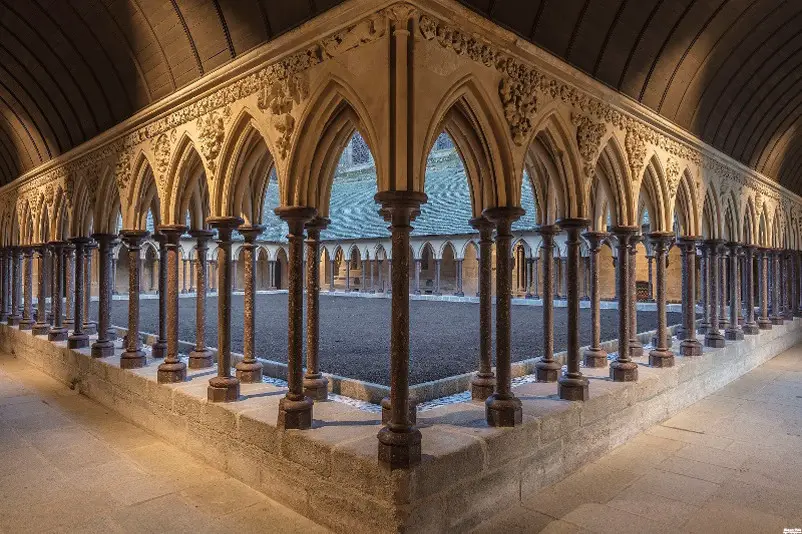
The architectural grandeur of Mont-Saint-Michel is a testament to the skill and vision of its medieval builders. The abbey, perched at the highest point of the island, is a masterpiece of Gothic architecture. Its construction began in the 10th century and continued for several hundred years, resulting in a complex blend of styles and structures that reflect the evolution of medieval architecture.
One of the most striking features of the abbey is its soaring spire, crowned with a gilded statue of Saint Michael, the archangel who, according to legend, inspired the creation of the abbey. The spire reaches a height of 170 meters (560 feet) above sea level, making it a prominent landmark visible for miles around. The abbey’s interior is equally impressive, with its grand halls, chapels, and cloisters that exude a sense of serenity and grandeur.
The cloisters, located on the northern side of the abbey, are particularly notable for their delicate arches and intricate stone carvings. These open-air galleries provide a peaceful retreat for contemplation and offer stunning views of the surrounding bay. The refectory, where the monks once dined, is another highlight, featuring a high vaulted ceiling and large windows that flood the space with natural light.
Fortifications and Defenses
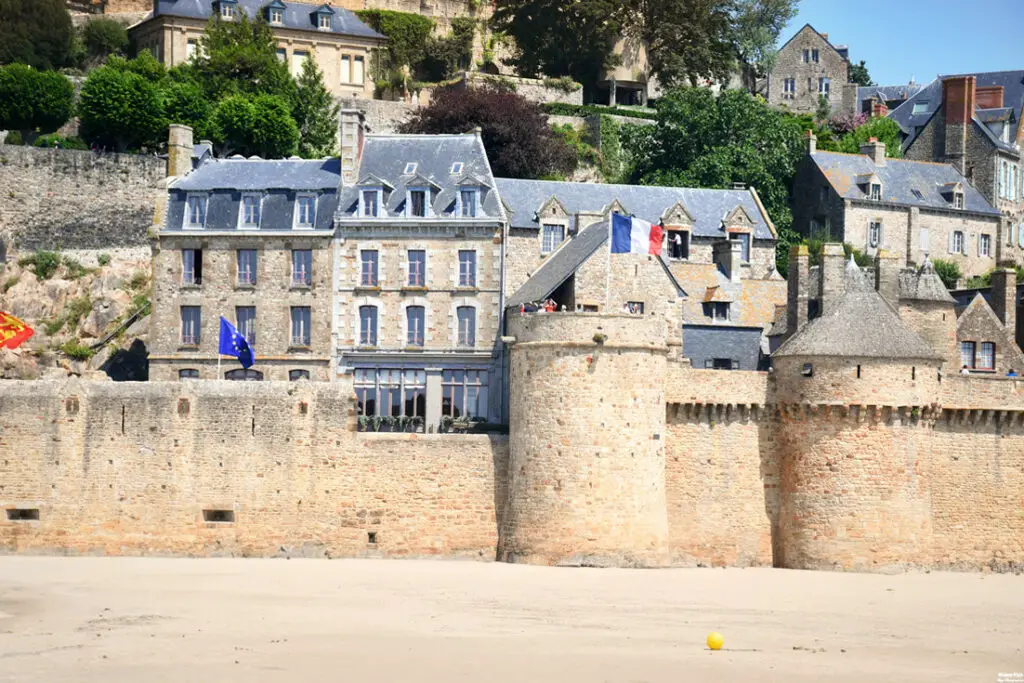
Given its strategic location and turbulent history, Mont-Saint-Michel was fortified to withstand various military threats. The abbey’s fortifications were strengthened during the Hundred Years’ War, when it became a symbol of French resistance against English forces. The robust defensive structures, including thick stone walls, towers, and bastions, were designed to repel invaders and protect the inhabitants.
The main entrance to Mont-Saint-Michel is through the King’s Gate, which is flanked by imposing towers and a drawbridge. This formidable gateway leads to a series of defensive passages and ramparts that visitors can explore. The walls are equipped with arrow slits and machicolations, allowing defenders to launch projectiles at attackers while remaining protected.
One of the most remarkable defensive features is the “Chemin des Remparts” or Ramparts Walk, which offers a scenic tour along the fortified walls. From this vantage point, visitors can appreciate the engineering prowess that went into constructing these defenses, as well as enjoy panoramic views of the surrounding bay and countryside. The fortifications of Mont-Saint-Michel not only provide a glimpse into the medieval military architecture but also underscore the island’s historical significance as a bastion of resilience and faith.
The Village of Mont-Saint-Michel
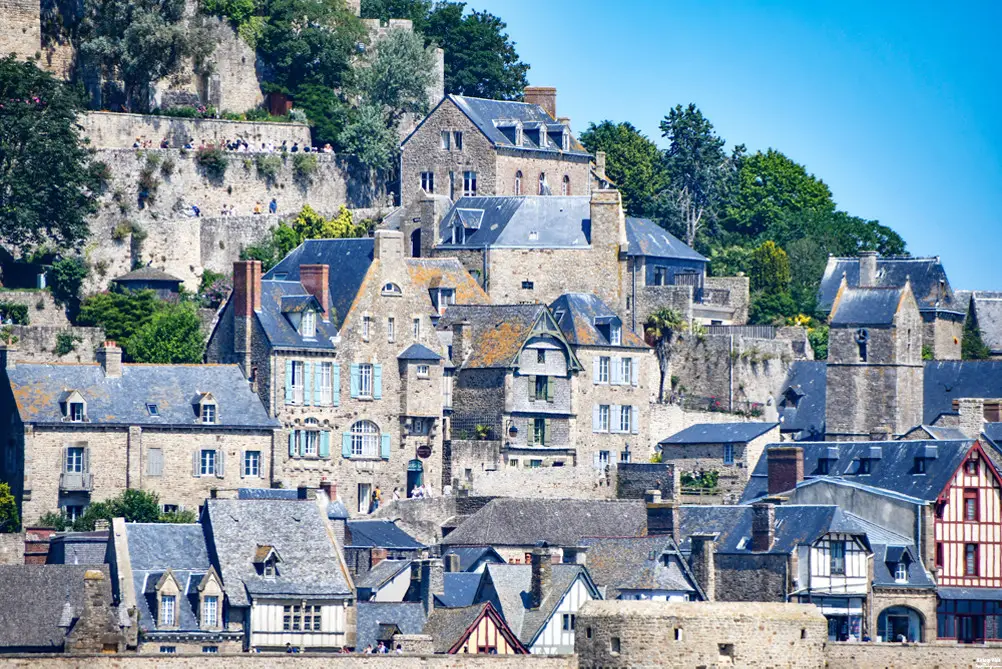
The medieval village that nestles at the foot of the abbey is an integral part of Mont-Saint-Michel’s charm. Its narrow, winding streets are lined with stone houses, shops, and restaurants, creating a lively and picturesque atmosphere. The village’s layout reflects its historical development, with buildings huddled closely together to maximize space on the rocky island.
One of the main thoroughfares is the Grande Rue, a bustling street that leads visitors from the main gate up to the abbey. Along this route, visitors can explore a variety of shops selling souvenirs, local crafts, and traditional Norman products. The village also boasts several historic buildings, including the parish church of Saint-Pierre, which serves as a reminder of the island’s religious heritage.
Despite the influx of tourists, the village retains a sense of timelessness, with its cobblestone streets and ancient architecture. The buildings are constructed from local granite, giving them a sturdy and enduring quality that has withstood the test of time. Exploring the village allows visitors to experience the daily life of the island’s inhabitants and appreciate the blend of history and modernity that defines Mont-Saint-Michel.
Gardens and Surroundings
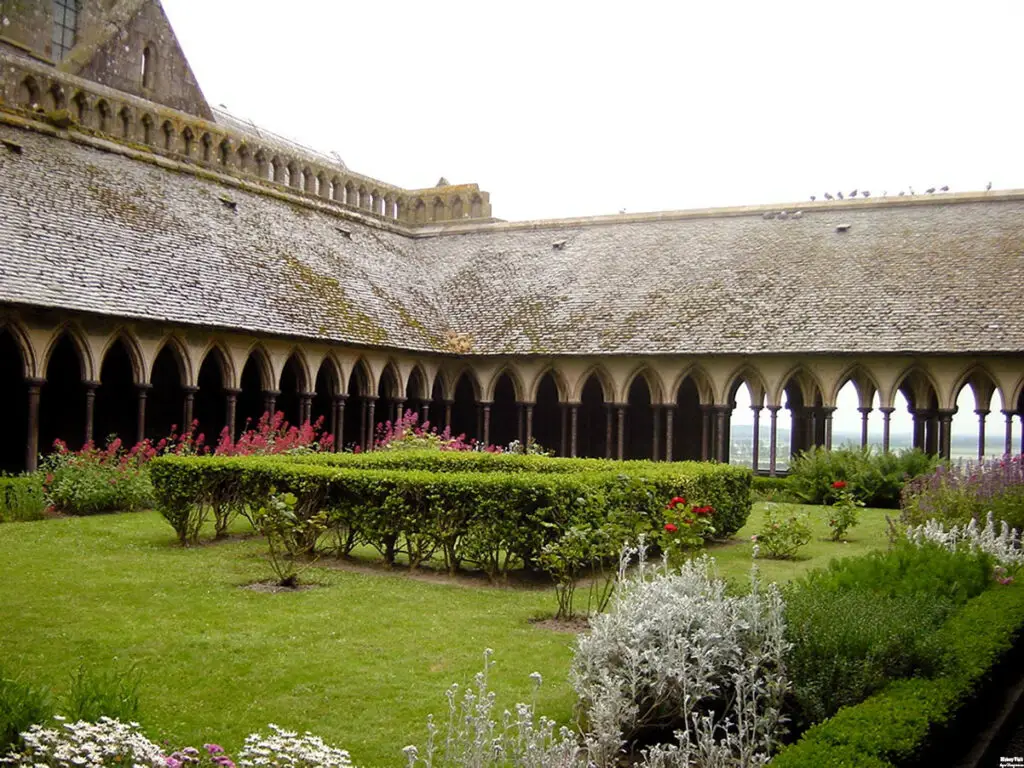
The gardens and natural surroundings of Mont-Saint-Michel enhance its beauty and provide a tranquil contrast to the architectural grandeur of the abbey. The abbey’s gardens, located on the southern side, are designed to blend seamlessly with the rugged landscape. These gardens offer a peaceful retreat and feature a variety of plants, including medicinal herbs, flowers, and shrubs that were traditionally used by the monks.
The layout of the gardens reflects the monastic principles of simplicity and harmony with nature. The terraces and walkways are designed to complement the natural contours of the island, creating a serene environment for contemplation and relaxation. The gardens also provide stunning views of the bay, allowing visitors to appreciate the natural beauty that surrounds Mont-Saint-Michel.
Beyond the gardens, the island is encircled by the vast tidal flats and salt marshes of the bay. These areas are rich in wildlife and provide a habitat for a variety of bird species, making it a popular destination for birdwatchers and nature enthusiasts. Guided tours of the bay offer an opportunity to explore this unique ecosystem and learn about the tidal phenomena that shape the landscape.
Experiencing the Tides
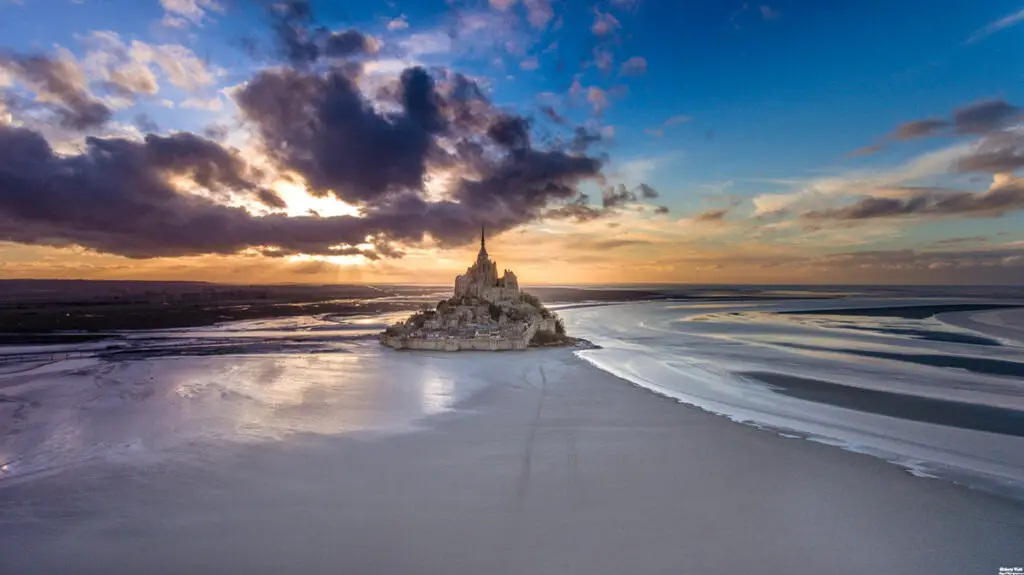
One of the most unique and captivating aspects of Mont-Saint-Michel is its dramatic tidal changes. The island’s accessibility depends on the tides, with high tide turning it into an isolated fortress surrounded by water and low tide revealing extensive mudflats and sandbanks. This natural phenomenon not only adds to the island’s mystique but also poses challenges for visitors and inhabitants alike.
Experiencing the tides at Mont-Saint-Michel is a highlight for many visitors. Walking across the causeway or even venturing onto the tidal flats during low tide can be a thrilling experience, offering a different perspective of the island and its surroundings. However, it is essential to be aware of the tide schedule and heed safety warnings, as the tides can rise rapidly and unpredictably.
Guided tours led by experienced local guides provide a safe and informative way to explore the bay. These tours often include explanations of the tidal mechanisms, the bay’s ecology, and the historical significance of Mont-Saint-Michel’s tidal isolation. The ever-changing landscape created by the tides ensures that each visit to Mont-Saint-Michel offers a unique and memorable experience.
Conclusion
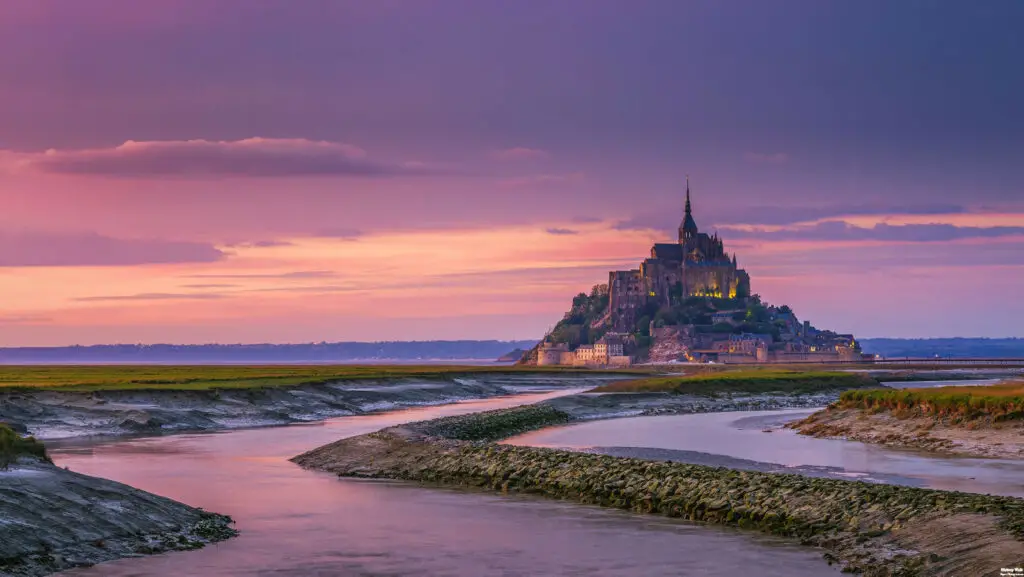
Mont-Saint-Michel stands as a remarkable testament to human ingenuity, religious devotion, and the harmonious interplay between nature and architecture. Its unique setting, perched atop a rocky islet amidst the tidal waters of the Bay of Mont-Saint-Michel, creates a captivating sight that has inspired awe and reverence for centuries. The abbey’s architectural splendor, combined with its historical significance and natural beauty, makes it one of the most iconic landmarks in the world.
As we have explored in this article, Mont-Saint-Michel’s geographical setting, architectural highlights, fortifications, village life, gardens, and tidal phenomena each contribute to its enduring allure. The island’s ability to blend history, culture, and nature into a cohesive and enchanting whole is what makes it truly special. Whether one is drawn by its spiritual significance, architectural beauty, or the sheer wonder of its tides, Mont-Saint-Michel offers an experience that is both profound and unforgettable.
For those fortunate enough to visit, Mont-Saint-Michel provides a journey through time and space, offering a glimpse into the past while standing firmly in the present. It is a place where history and legend converge, creating a timeless monument that continues to captivate the hearts and minds of all who encounter it. Mont-Saint-Michel remains a beacon of history and beauty, a testament to the enduring spirit of human creativity and resilience.


